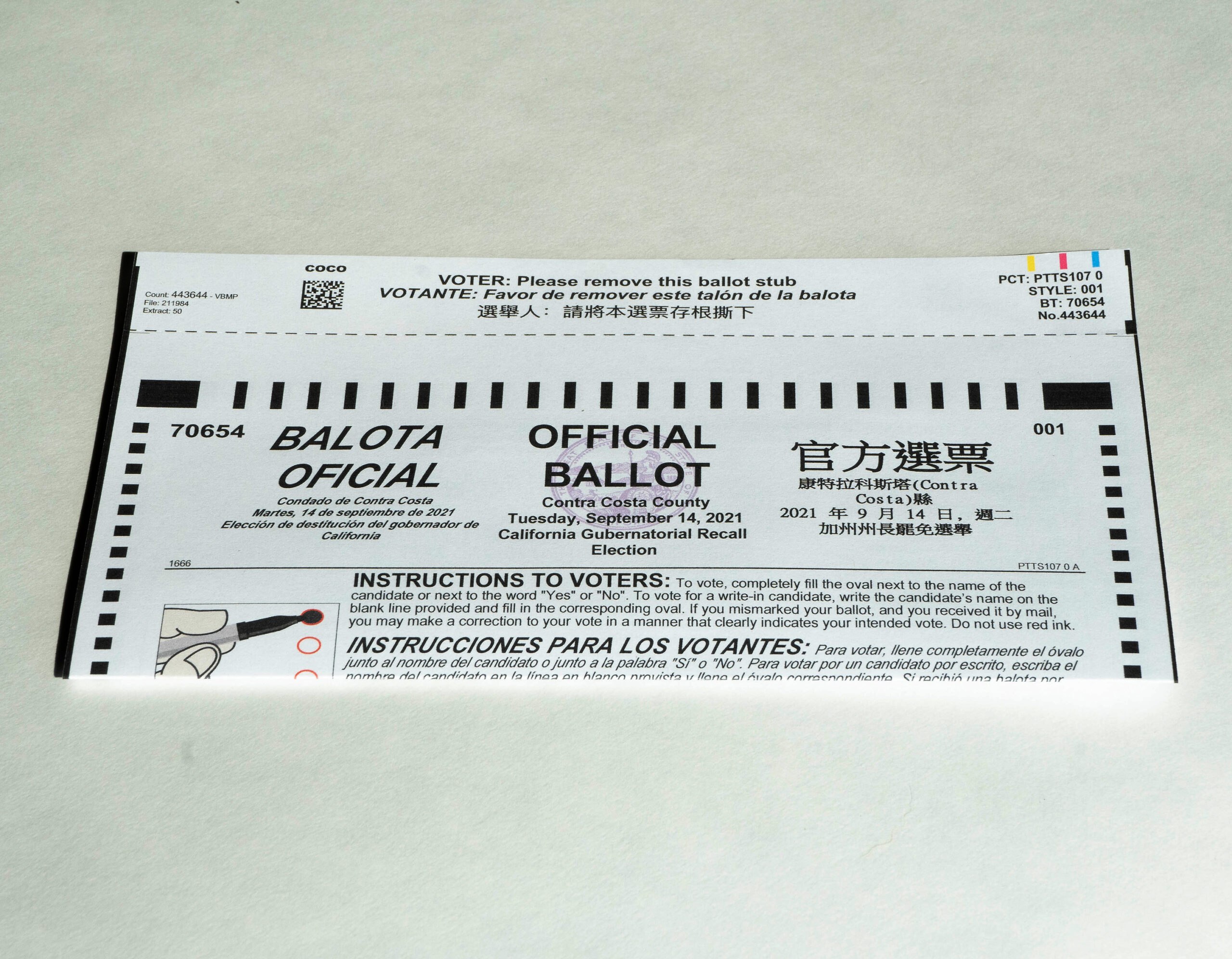California Gov. Gavin Newsom faces a recall election on Sept. 14, which means he could be out of office by October, ending his term about a year early.
His fate lies in the hands of state voters. But what is a recall and how does it work?
California is one of 19 states that allows voters to remove state officials before the end of their term, or recall elected officials.
There doesn’t have to be a specific reason, but there needs to be enough ballot signatures to prompt a recall election—12% of voters from the last election, who come from at least five different counties.
In the case of Newsom’s recall, organizers had to acquire 1,495,709 signatures.
After five failed attempts to get the Democratic governor removed in a very blue state, Republican organizers, led by retired Yolo County Sheriff Orrin Heatlie, got 1,719,900 valid signatures by July 1.
Newsom now needs more than 50% of the vote to stay in office.
To vote, the first thing one should do is check if they are registered to vote, at https://voterstatus.sos.ca.gov.
If they are not, the deadline to register to vote—which can be done online at RegistertoVote.ca.gov—in order to get a ballot for the recall is Monday, Sept. 13.
Those who miss the Monday deadline can register in person at a local voting center, but they will cast a provisional ballot. A provisional ballot holds the same weight as a regular one but will only be counted after a county elections office verifies that the person is eligible to vote.
More information about same-day voting can be found at www.sos.ca.gov/elections/voter-registration/same-day-reg.
For those who are already registered to vote, mail-in ballots should have been delivered by Aug. 16.
Completed ballots can be sent in the mail without any postage, but they must be postmarked by Sept. 14 to be counted.
However, for those who prefer to drop off their ballot in person, make sure it is returned to a secure drop box, county voting center or local polling place by 8pm on Sept. 14. Every county will have at least one early-voting location, as mandated by state law.
There are two questions on the recall ballot.
Question 1: “Shall GAVIN NEWSOM be recalled (removed) from the office of Governor?”
A “YES” vote is in support of having Newsom removed from office, while a “NO” vote is in support of him staying in office until his term ends Jan. 2, 2023.
Newsom will only be recalled if 50% or more of voters vote “YES” on the recall, in which case he will be replaced by the candidate who gets the most votes on the second question.
Question 2: “Candidates to succeed GAVIN NEWSOM as governor if he is recalled.”
There are 46 candidates running to replace Newsom, and the winner simply needs the most votes, even if it is not a majority vote.
The person who wins the most votes, assuming 50+% of people vote yes on Question 1, will replace Newsom, and serve the remainder of his term.
Voters can write in candidates other than the 46 listed, but write-ins will only be counted if the candidate filed paperwork with elections officials by Tuesday, Sept. 14.
The state will release a list of certified write-in candidates by Sept. 3.
The list of the 46 candidates on the ballot is at https://elections.cdn.sos.ca.gov/statewide-elections/2021-recall/certified-list.pdf.
People who want to drop off their mail-in ballot can find a local drop box through the Secretary of State’s website at https://caearlyvoting.sos.ca.gov/ or by contacting their local county elections office.
Though Republicans threw a slew of accusations against Newsom, what really prompted momentum for the recall was his handling of the pandemic, particularly when he dined maskless with lobbyists at The French Laundry, a high-end restaurant in Yountville, in November 2020 while telling Californians to mask up and stay at home.
Newsom has called the recall a “power grab” by Republicans, because they typically cannot win gubernatorial elections in the heavily Democratic state.
Meanwhile, recall supporters claim Newsom’s light-on-crime policies make the state a dangerous place to live. Though overall crime rates in major California cities decreased from 2019 to 2020, homicides were up, making many residents believe crime has increased.
Recall supporters also blame Newsom for increased homelessness and homeless encampments in the state. Homelessness has certainly grown while he has been in office—a trend consistent over the last decade, at least. It is also worth noting, however, that Newsom signed a $12 billion funding package earlier this year to tackle homelessness in the state.






